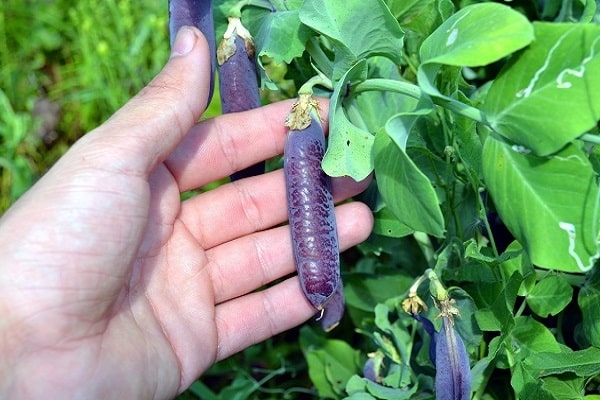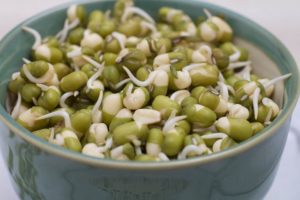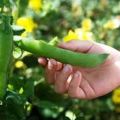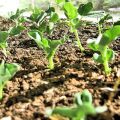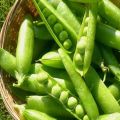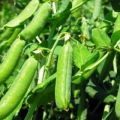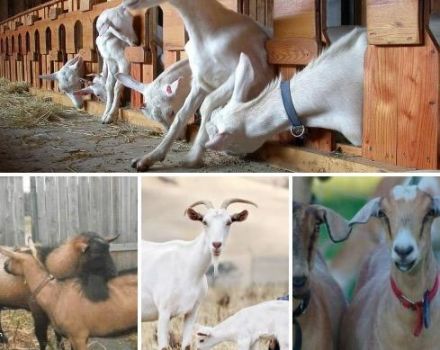Description of the best varieties of purple peas, their characteristics and cultivation
A relatively new type of peas that summer residents grow for beauty. But few people know that purple peas are very useful for the body. It is not difficult to grow it on the site, it does not differ in any peculiarities in its care. Chosen for its appearance, which makes it unique.
Characteristics of purple peas
The culture is gradually being ousted from summer cottages by an abundance of canned peas. They just buy it, without wasting their time on cultivation and care. A few gardeners plant peas at home, and then, in order to please the child.
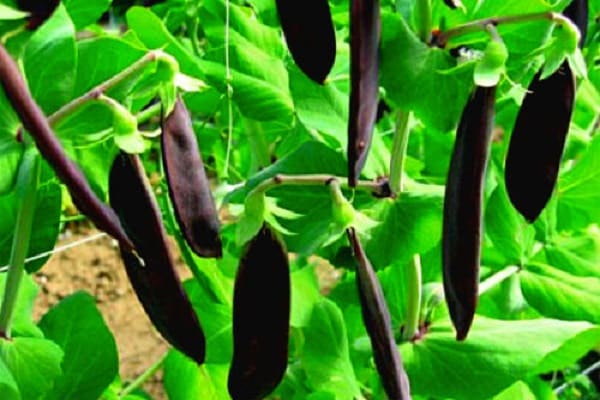
The climbing plant is a great decoration. During flowering, the aroma is very strong and pleasant. And due to the fact that the pods of his purple peas are very easy to collect. The beans contrast against the greenery.
The pods contain anthocyanin, a substance that turns them purple. It breaks down when cooked. But many people prefer to eat peas directly from the garden, so the benefits are undeniable.
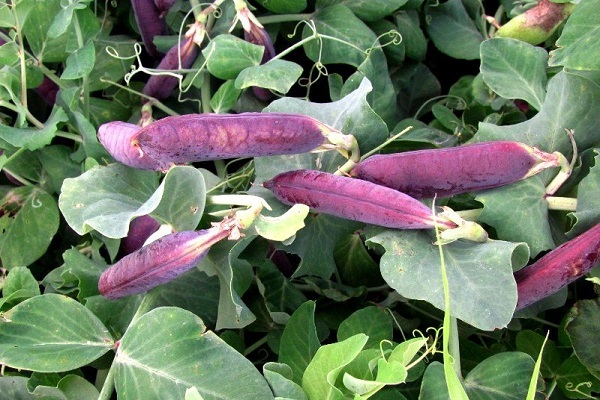
Once peas were an indispensable product, mainly due to the fact that dried peas are stored for a very long time, and the variety of dishes with its use is very wide.
Varieties
Since purple peas were bred quite recently, there are few varieties for sale in stores. Each of them differs from each other in some peculiarities.
Popular species:
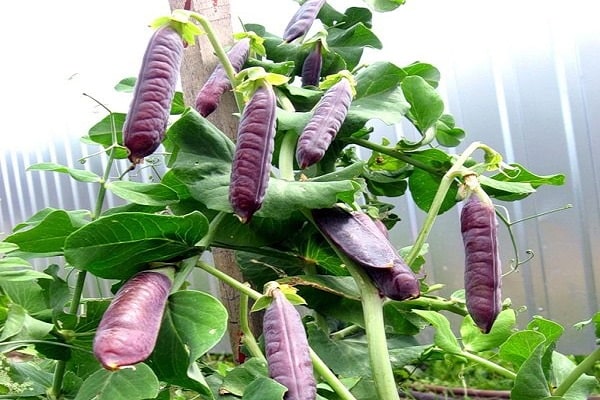
- Purple sugar.
- The purple king.
- Everything is purple.
- Leafless slider.
- Afilla.
In order to understand the difference between them, the summer resident studies their description and, based on this data, makes the final choice.
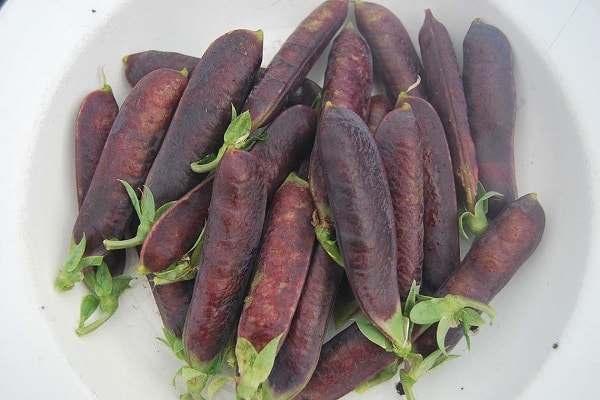
Purple sugar
Plant height 1.50 m, peas are rich in proteins and minerals. Blooms from May to July, large purple flowers have a very strong aroma. Purple sugar belongs to the varieties of medium ripeness, peas ripen in 60-70 days. The pod is green-purple in color, 8 cm long. The peas are purple, green at the stage of waxy ripeness.
The plant is cold-resistant, used for any purpose, for growing for food and decorating the site. Planted at a distance of 30 cm from each other. They are used for making salads, soups, mashed potatoes and many other dishes. The yield of the variety is comparatively lower than that of green species.

Purple king
A variety of culture that has purple pod valves and green peas. The plant is highly branched when in bloom, covered with pale pink buds. It is often used in decorating the site.
When fruiting begins, the purple beans stand out against the green mass of the bush. Height 60-90 cm.
Peas perfectly tolerate temperature extremes. Young shoots are able to withstand slight frosts. The yield of this variety is 1.5 kg from 1 m2... Caring for him is usual, watering, loosening top dressing. Able to grow without support. Its fruits are consumed in any form, but most of the nutrients are found in fresh beans. Ripens one month after the end of flowering.
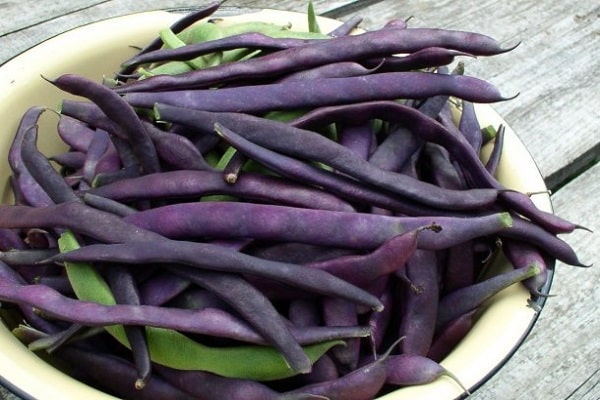
Everything is purple
Refers to mid-season crop varieties. Ready to consume 70 days. The pod is 10 cm long and contains 9 peas. The leaves are purple, the peas are green. They are eaten in all types and methods of preparation, including as green beans.
Plant height 2 m, reviews are mostly positive. Summer residents praise the variety for its high yield, external beauty and excellent taste. Caring for the plant does not differ in features, all standard agrotechnical techniques are performed.
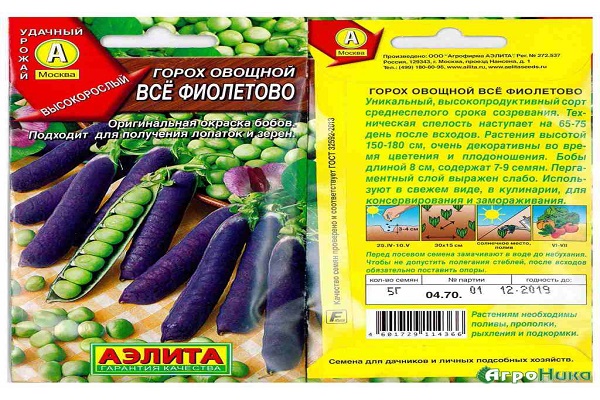
Leafless Sugar Slider
This is an early type of culture. The plant has no leaves at all, it can grow without support. Since the modified antennae-leaves cling to each other. The beans are 10 cm long and can hold 8-9 peas. Delicious and nutritious, they are enjoyed by all members of the family.
Plant height does not exceed 70 cm. It is used for canning, freezing, preparing various dishes and salads. The fruiting period is long, the yield is high.
Caring for the bushes consists in timely watering, feeding and loosening the soil.
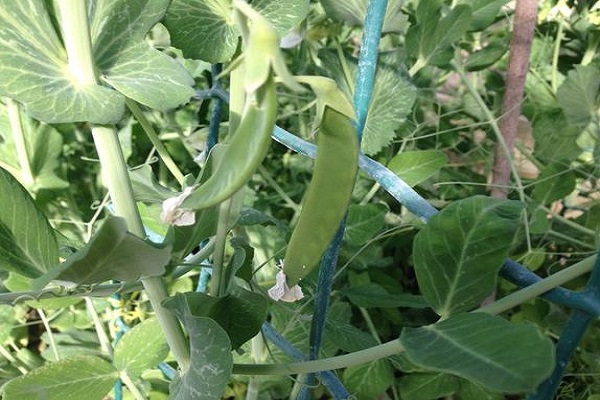
Afilla
Included in the category of late varieties. The height of the plant is only 50-55 cm. The yield of the variety depends on the summer resident, if you remove the beans from the bush in a timely manner, it forms new ones, thus, the fruiting period is extended.
The variety is leafless, the fruit tastes excellent, and is grown in the same way as other varieties of the crop. There is no need to put support, the plant is able to support itself.
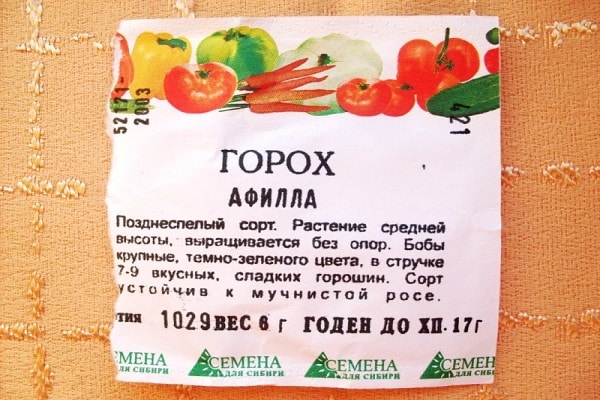
Growing rules
First you need to decide on the place where the culture will be grown. Areas that are well lit and protected from drafts are most suitable. Then you should choose a variety that will feel great in a certain area and climatic features of the growing region.
Prefers fertile soil. Not worth it grow peas in acidic soil, this will not lead to any results.
Preparation of planting material. In order to reject bad seeds, take 1 liter of warm water, add a tablespoon of salt to it. Pour peas into the solution. Those that float are removed immediately, those that have sunk to the bottom are taken for landing. After checking the seeds, they are washed and dried.

It is recommended to soak the planting material, swollen peas are planted in the ground. The water that the peas are poured with should be warm, growth stimulants are added to it.
If a plant peas immediately into the ground, without soaking, then the plants will rise later. But at the same time, the bush will be stronger and faster in development.
Landing. Seeds are planted early, directly into the ground. Only the beds are prepared in advance, since the fall. Preparation includes digging soil with fertilizers. In spring, wood ash and nitrogen fertilizers are added to the holes.
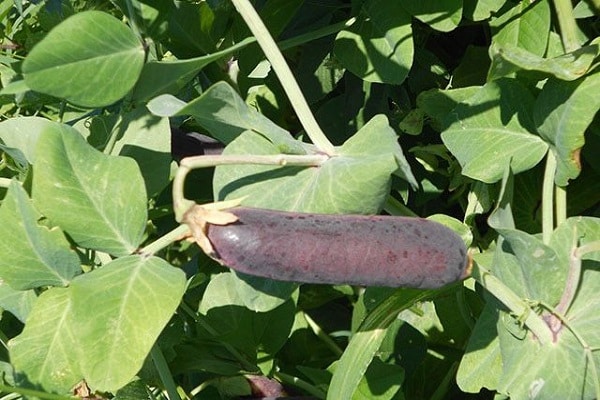
The main thing to remember when planting peas is that they should not be planted in hot weather. The seeds won't even germinate.
Peas are grown using a belt method. Where 1 tape consists of 3 lines. The distance between them depends on the variety of peas. After the seeds are planted, it is required to compact the top layer.
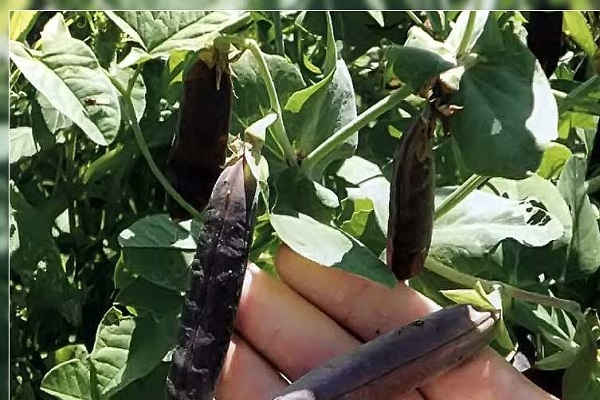
Care features
Purple peas do not require any special care requirements. Everything is standard, as when growing ordinary green peas.
Attention is paid not only to loosening the beds, removing weeds, but also feeding. In order for the peas to give the declared yield, it must be fertilized at least 2 times during the growing season.Any complex fertilizer is suitable as a top dressing, it should be applied before flowering, and during the appearance of ovaries.
Water the peas regularly and carefully, preventing the soil from drying out. The plant requires the greatest care immediately after sprouting, then during budding and bean formation.

Loosening is important for the culture, it provides oxygen access to the root system. When the sprouts are 20-25 cm in size, supports for weaving are installed.
When aphids appear, wash them off with a stream of water to avoid spreading to other plants. Bushes infected with powdery mildew are pulled out and destroyed, preventing the spread of the disease throughout the site.
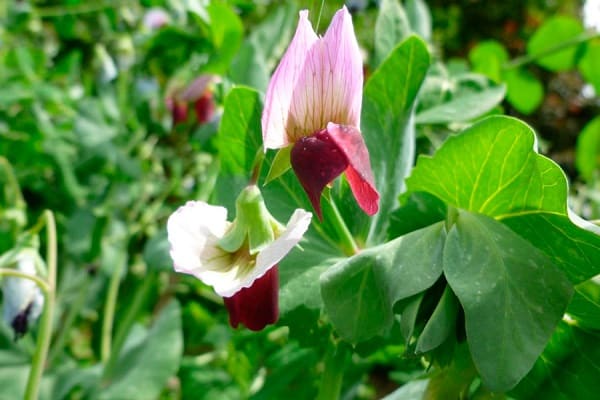
Advantages and disadvantages
Culture has positive and negative properties, which are provided to each summer resident individually.
Pros:
- Decorative appearance.
- Versatility of use.
- Peas are rich in vitamins and minerals.
- Improves the functioning of the heart, liver and kidneys.
- In combination with cereals, it gives a complete protein.
- Possesses medicinal properties.
- Purple peas contain anthocyanin, a substance that fights cancer cells.
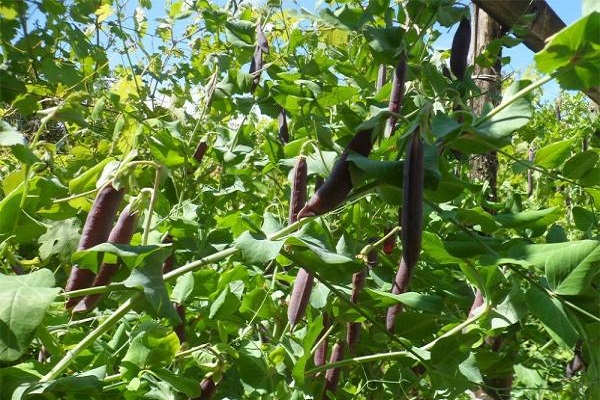
Minuses:
- Increased gassing.
- Restrictions on use for the elderly.
- Peas should not be consumed by those who suffer from disorders of the gastrointestinal tract.
A person who uses peas determines for himself a set of advantages and disadvantages of culture.
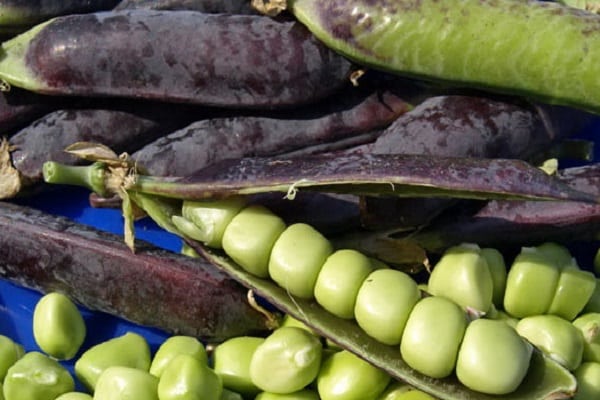
Pests and diseases
Hybrids are immune to disease, but most varieties suffer from powdery mildew, fusarium wilting, rust, downy mildew and other diseases typical of this crop.
To avoid their spread, preventive measures, crop rotation, loosening, removing weeds from the beds and planting disease-resistant pea varieties should be carried out.
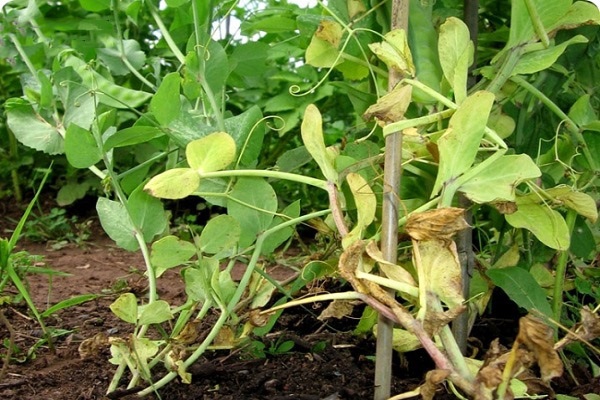
It is easier to prevent a disease than to cure it afterwards. The diseased plant must be removed immediately to avoid contamination of neighboring bushes.
Harvesting and storage
Peas are a universal culture, summer residents prefer to eat it directly from the beds, fresh. But for those who want to preserve it in a canned form in the winter, peas should be picked at the stage of waxy maturity. It can also be frozen.
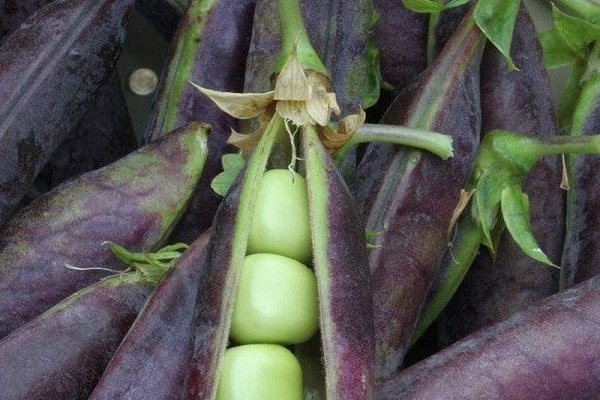
Some gardeners wait for the peas to ripen, then harvest them, dry them, and store them. Dried peas lie for several years. But, it should be remembered that it must ripen well, dry and remain out of the reach of insects.
Purple peas, a useful find for exotic lovers.
